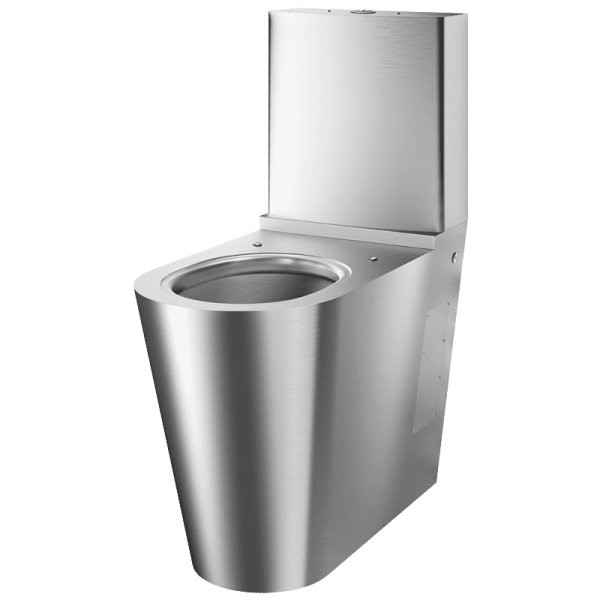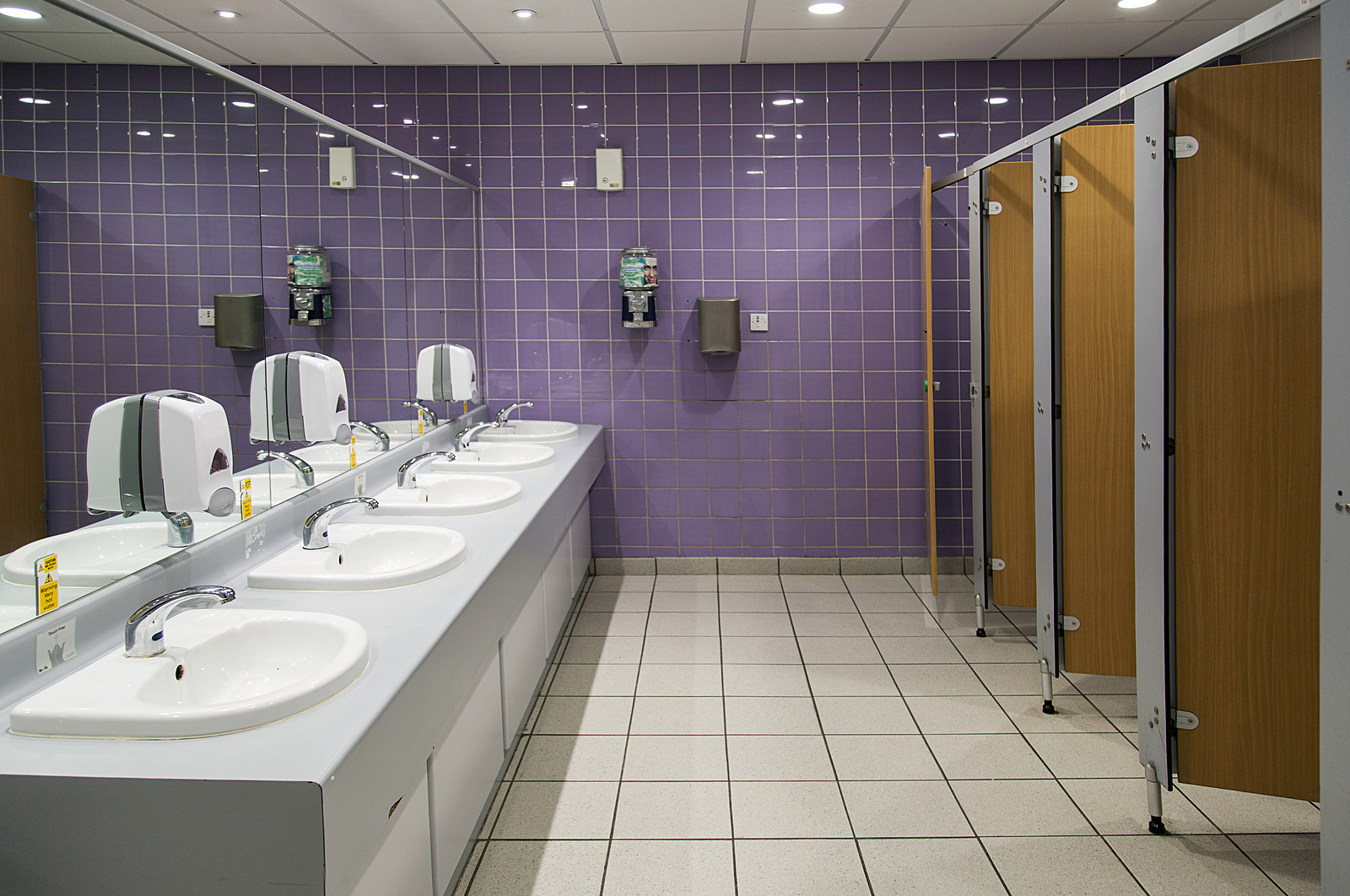

When designing commercial washrooms, something you should consider is whether to get stainless steel or porcelain appliances.
There are many advantages to both, but here are some reasons why stainless steel toilets, basins and urinals are a great idea if you see high traffic in your public restrooms.
Hygienic
Stainless steel toilets are considered to be more hygienic than other materials, as they are easier to clean thanks to having no crevices. As they are smoother, they can be wiped down more easily. Therefore, there is less opportunity for bacteria to grow.
At the same time, stainless steel does not need a lot of scrubbing, which means they can remain cleaned by simply wiping them down with antibacterial solutions or high-pressure hoses when a more thorough cleaning is required. This saves a lot of time cleaning, enabling staff to finish more quickly.
When it comes to stainless steel sinks, they are also superior to porcelain. The reason behind this is they are resistant to stains, thanks to being non-porous. Therefore, they can simply be cleaned with just water and soap.
As the smooth surface of stainless steel toilets, sinks and urinals means no microorganisms can survive on them, they are considered to be more hygienic than other types of washrooms.
Low maintenance
Another reason to opt for stainless steel appliances is they require little maintenance.
Their material can sustain a lot of wear and tear, and is resistant to corrosion and rusting. Therefore, they are likely to last many years.
At the same time, they are difficult to vandalise, as paint or pen cannot be absorbed into the metal, so they are unlikely to become damaged.
Stainless steel is less able to hold on to odours than other materials, such as plastic or porcelain. That is why chefs often rub their hands on the blade of a stainless steel knife if they want to get rid of strong scents, such as garlic or onion.
The science behind this is the sulphur molecules in these foods bind with the metals in the stainless steel, removing them from hands. At the same time, the steel does not retain the odour.
This is ideal in a public washroom where there are likely to be lots of unpleasant scents throughout the day.
Long-lasting
Anyone who has ever used stainless steel toilets, knives or pans knows they are difficult to damage, are incredibly strong, and can last for several years.
It is very resistant to vandalism, which is essential in a public space, as it is a challenge to cause any damage to it. At the same time, it is extremely unlikely to need repairing, as it has a very long lifespan.
In fact, depending on the grade of the steel and its environment, it can last up to 1,000 years before breaking down. Those with a higher concentration of chromium and nickel are more likely to last longer, so this is worth bearing in mind when choosing between different stainless steel toilets.
In comparison, a porcelain toilet typically lasts between 20 and 50 years, which, while still being a long time, does not compare with the longevity of stainless steel washrooms.
Environmentally friendly
An important advantage of stainless steel when choosing how to fit out a public restroom is that it is considered one of the most eco-friendly metals.
This is an essential consideration for businesses or government bodies these days, as everyone is working towards making Britain carbon neutral. To achieve the ambitious net-zero emissions goal by 2050, one change you could make would be to swap from porcelain toilets or urinals to stainless steel ones.
It is thought that 92 per cent of stainless steel can be reused in the future, whether in the production of new stainless steel or to make carbon steel. Additionally, stainless steel that is currently being used is most likely to be made from recycled materials, with two-thirds of stainless steel products created in this sustainable way.
By choosing stainless steel, therefore, you are reducing the amount on landfill sites, as old material will not go to waste and your washroom can be re-manufactured in the future.
Landfill rubbish is a growing problem in the UK, with more than 15 million tonnes of rubbish being sent there every year. Not only are they eye-sores, but they emit greenhouse gases and even toxic substances when the waste deteriorates, exacerbating the problem of climate change.





